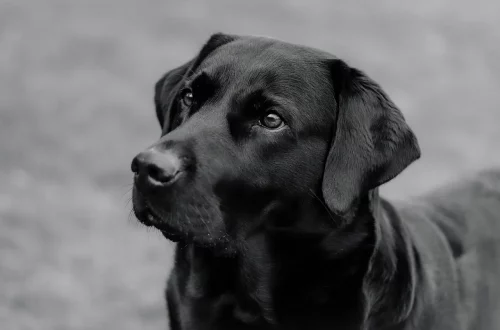
Exploring the Artistry Behind Zane Phillips Naked Photography
Exploring the world of photography often reveals a multitude of styles and themes, each with its own unique appeal and artistry. Among these, nude photography stands out as a particularly evocative genre, challenging both the viewer’s perception and the photographer’s ability to convey emotion through the human form. This art form goes beyond mere representation; it delves into the realms of vulnerability, intimacy, and the celebration of the human body.
In this context, Zane Phillips emerges as a significant figure, known for his distinct approach to nude photography. His work encapsulates a blend of technical skill and artistic vision, inviting audiences to engage with the images on a deeper level. Through his lens, Phillips captures not just the physicality of his subjects but also their essence, creating a dialogue between the viewer and the artwork. This exploration of the human figure in its most natural state can provoke a variety of emotions and thoughts, prompting discussions about beauty, identity, and societal standards.
As we delve deeper into the artistry behind Zane Phillips’s nude photography, we uncover the layers of meaning that make his work resonate with many. The journey into this artistic expression not only highlights the aesthetic qualities of his images but also reflects broader themes within the genre itself.
Understanding the Aesthetic Appeal of Nude Photography
Nude photography has long been a subject of fascination, often celebrated for its aesthetic qualities and the raw beauty it captures. At its core, this genre seeks to explore the human body not merely as a subject but as a canvas that tells a story. The aesthetic appeal lies in the delicate interplay of light and shadow, form and texture, creating an image that transcends the ordinary.
Zane Phillips, in his work, exemplifies this aesthetic approach. His mastery of lighting techniques allows him to highlight the curves and contours of the human body, transforming it into a work of art. By utilizing natural light or carefully placed artificial sources, he creates a sense of depth and dimension that draws the viewer in. This careful attention to lighting is crucial, as it can evoke different moods and emotions, ranging from serene to provocative.
Moreover, composition plays a vital role in the aesthetic success of nude photography. Phillips often employs unique angles and perspectives that challenge conventional views of the human form. By presenting his subjects in unexpected ways, he invites viewers to reconsider their perceptions of beauty and body image. This innovative approach not only captivates the audience but also encourages them to engage with the artwork on a more personal level.
Another significant aspect of the aesthetic appeal of nude photography is the emotional resonance it can evoke. Phillips’s work often captures candid moments that reflect a range of human experiences—from vulnerability to empowerment. This emotional depth enhances the viewer’s connection to the images, making them more than just visual representations but rather powerful narratives that resonate with the audience’s own experiences and feelings.
Ultimately, the aesthetic appeal of nude photography is multifaceted, combining technical skill with emotional storytelling. Through his artistry, Zane Phillips successfully navigates these complexities, creating compelling images that invite viewers to explore their own interpretations of beauty and humanity.
The Role of Vulnerability in Phillips’s Work
Vulnerability is a recurring theme in Zane Phillips’s nude photography, serving as a powerful tool for both the photographer and the subjects. In many ways, the act of undressing goes beyond the physical; it represents a shedding of layers that allows for a deeper connection to be formed. Phillips embraces this vulnerability, capturing moments that reflect the raw and unguarded aspects of human existence.
In his work, Phillips often portrays his subjects in states of introspection, encouraging them to embrace their natural selves. This approach not only fosters a sense of trust between the photographer and the model but also creates an environment where authenticity can flourish. The resulting images often convey a deep sense of honesty, inviting viewers to witness moments of genuine emotion and self-acceptance.
Moreover, vulnerability in photography can serve to challenge societal norms and expectations surrounding body image. In a world where perfection is often fetishized, Phillips’s work offers an alternative narrative that celebrates imperfections and individuality. By presenting his subjects in their most authentic form, he invites the audience to reflect on their own perceptions of beauty and self-worth.
The emotional impact of vulnerability is further amplified by the context in which these images are presented. Phillips often incorporates elements of storytelling, allowing viewers to engage with the subjects beyond their physical appearance. This narrative approach humanizes the models, transforming them from mere subjects into individuals with stories and experiences that resonate with the audience.
In essence, vulnerability plays a crucial role in Zane Phillips’s nude photography, enriching the viewer’s experience and fostering deeper connections with the artwork. By celebrating authenticity and challenging societal standards, he creates a space for individuals to explore and embrace their own vulnerabilities, ultimately leading to a more profound appreciation of the human form.
The Intersection of Identity and Body Representation
In contemporary art, the representation of the body often intersects with themes of identity, making it a rich area for exploration. Zane Phillips’s nude photography is a prime example of how this intersection can be navigated to reveal complex narratives about self-perception and societal influences.
Phillips’s work often reflects a diverse range of identities, emphasizing the importance of representation in art. By showcasing individuals from various backgrounds, body types, and gender expressions, he challenges the traditional notions of beauty that have long dominated the art world. This inclusivity not only broadens the scope of representation but also encourages a dialogue about the multifaceted nature of identity.
The way bodies are portrayed in photography can significantly influence societal attitudes towards different identities. Phillips’s approach often seeks to dismantle stereotypes and promote body positivity by capturing his subjects in a way that celebrates their uniqueness. This representation can empower individuals who may have felt marginalized or underrepresented, fostering a sense of belonging and acceptance.
Furthermore, the interplay between identity and body representation in Phillips’s work invites viewers to confront their own perceptions. By presenting bodies that defy conventional ideals, he encourages audiences to question their biases and assumptions regarding beauty and identity. This reflective process can lead to a deeper understanding of oneself and others, promoting empathy and compassion in a world often divided by appearance.
Ultimately, the intersection of identity and body representation in Zane Phillips’s nude photography serves as a powerful commentary on the complexities of human existence. By embracing diversity and challenging societal norms, he creates a platform for dialogue that resonates with viewers on both personal and collective levels.
The Influence of Cultural Context on Nude Photography
Cultural context plays a significant role in shaping the perception and practice of nude photography. Zane Phillips’s work is no exception, as it reflects the nuances of contemporary society and the evolving attitudes towards nudity and body representation. Understanding these cultural dynamics is essential for appreciating the depth of his artistry.
In many cultures, nude photography has historically been met with a range of responses, from appreciation to outright criticism. These reactions are often influenced by societal norms, religious beliefs, and historical contexts that shape perceptions of the human body. Phillips’s work navigates these complexities, presenting nudity as a form of artistic expression rather than something to be stigmatized.
In contemporary society, there has been a shift towards embracing body positivity and celebrating diversity in body types. This cultural evolution has allowed artists like Phillips to explore nudity in ways that challenge traditional views. By capturing his subjects in vulnerable yet empowering poses, he reflects a growing acceptance of the human form in all its variations.
Moreover, the influence of digital media and social platforms has transformed the landscape of nude photography. In an age where images can be shared and disseminated rapidly, artists are faced with new challenges and opportunities. Phillips harnesses these platforms to reach a broader audience, engaging in conversations about body image and self-acceptance that resonate with viewers across the globe.
Ultimately, the cultural context in which nude photography exists shapes not only the way it is created but also how it is perceived. Zane Phillips’s work exemplifies this dynamic interplay, offering a contemporary perspective that invites dialogue and reflection on the evolving nature of nudity and body representation in art.
In conclusion, Zane Phillips’s nude photography is a rich tapestry woven from threads of vulnerability, identity, and cultural context. His ability to capture the human form in its most authentic state challenges viewers to reconsider their perceptions of beauty and self-worth. Through his artistry, Phillips not only celebrates the body but also invites audiences to engage with the deeper narratives that lie within each image, fostering a greater understanding of the complexities of human existence.




